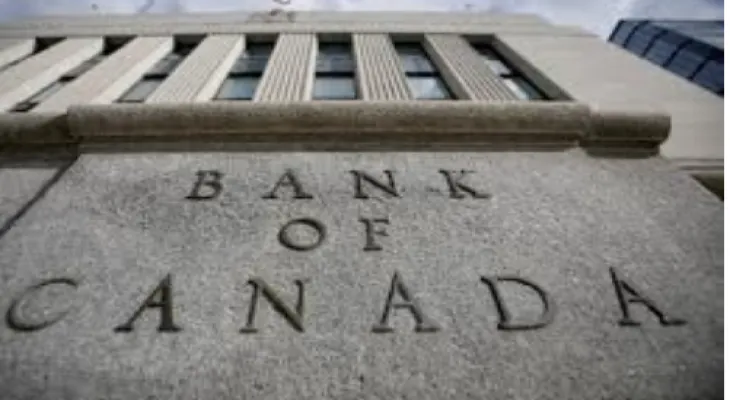Search here
Newspaper
Search here

Arab Canada News
News

Published: July 15, 2022
The Bank of Canada's recent interest rate decision has heightened concerns that the economy is heading towards a recession that could cost some Canadians their jobs and keep workers' wages stagnant.
Central bank governors took their boldest steps yet on Wednesday to try to tame rapid inflation, raising the bank's key interest rate by a full percentage point and surprising private-sector economists who expected a more moderate approach.
In the Wednesday morning announcement, Bank Governor Tiff Macklem acknowledged that this move was unusual but said "it reflects very unusual economic conditions."
Consumer prices are at their highest levels in decades, with inflation reaching 7.7 percent in May and expected to hit eight percent in the coming months—much higher than the bank's 2 percent target range.
Meanwhile, Macklem warned that if left unchecked, the cost of living would turn into an affordability crisis for ordinary Canadians.
He said low inflation "gives people the ability to predict – to plan spending and savings decisions, budgeting, and living their lives without needing to worry about the cost of things next week or next month or next year."
But the road to low inflation is similarly difficult.
The higher interest rates go, the harder it becomes to borrow money, meaning consumers will spend less on major purchases while businesses curb operational investments.
With slower economic growth, businesses typically have to freeze hiring and cut costs, often leading to higher unemployment rates.
With the Bank of Canada prepared to push interest rates higher in the coming months—the next interest rate decision is in September—a growing number of economists expect a tough road ahead for workers.
Last week, RBC predicted a "moderate" recession by 2023, raising the unemployment rate to about 6.6 percent due to rising interest rates.
Research released Monday by the Canadian Mortgage and Housing Corporation estimated that Canada’s unemployment rate—currently at a record low of 4.9 percent—will rise to between 6.2 and seven percent in early 2023 due to weaker economic conditions.
By forcing companies to slow expansion and cut costs, workers are likely to find it increasingly difficult to negotiate raises, which is part of the central bank’s plan to prevent a "wage-price spiral" where workers demand increasingly higher wages to keep up with rising costs of living.
If a whole group of people lose their jobs, not many people will want to ask for raises.
In a labor market where the unemployment rate is seven or eight percent, workers do not ask for raises.
On the other hand, David Macdonald, an economist at the Canadian Centre for Policy Alternatives, said, "This is not the right economic situation."
The Bank of Canada has downplayed fears of a recession, considering that Canadians are well-equipped to handle higher rates and manage their finances.
Employment rates have risen, business bankruptcies have declined, and households have amassed record savings, putting many Canadians in a comfortable position to withstand an economic downturn.
At Wednesday’s meeting, Macklem doubled the bank’s target for a "soft landing"—a difficult maneuver where higher interest rates help reduce inflation without damaging the economy.
He said the bank is raising interest rates sharply now in hopes that when it decides to raise rates again later this year, it can be more moderate than it was in July.
He explained, "By increasing interest rates now, we are trying to avoid the need for higher rates in the future."
This tightening cycle tends to be followed by softer downturns.
But even with lighter rate hikes, some economists note there is little historical precedent for a successful soft landing.
In the past six decades, the Bank of Canada has sought to combat widespread inflation through tight monetary policy three times—in the 1970s, 1980s, and early 1990s.
Each attempt ended with a recession that led to higher unemployment rates and job losses, according to a recent analysis by the Canadian Centre for Policy Alternatives.
During the worst recession periods, between 1981 and 1983, the employment rate fell by 4.2 percent.
A study found that with today’s population, this drop is equivalent to putting 1.3 million Canadians out of work.
Simply put, there is no historical precedent for the Bank of Canada’s "soft landing" plan.
Macdonald, the study’s author, said that every time the Bank of Canada has tried such a plan by quickly raising interest rates—which it seems to have started doing now—it has resulted in a collapse.
In a client note, RBC economist Josh Nye said the bank’s desired landing "will be difficult to achieve."
He wrote, "Our current forecasts assume a moderate recession next year."
The Bank of Canada kept interest rates at record lows during the pandemic, allowing consumers to spend widely and businesses to invest in operations while strict public health restrictions threatened Canadian jobs and economic prosperity.
The Bank of Canada’s first interest rate hike came in March, after two years of the pandemic, followed by two more increases in April and June.
The bank will also announce its next interest rate decision on September 7.
Comments